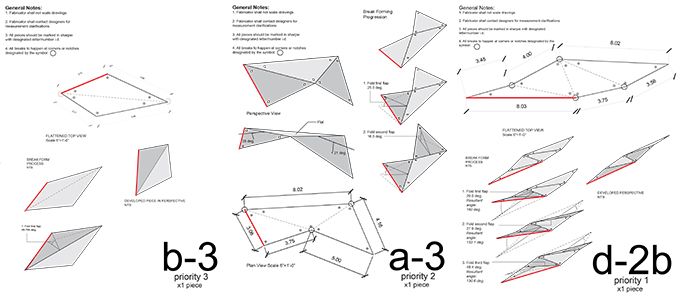Matthew Z Huber | Design Thinking
Folded Plate Bridge
Date: Spring 2011
The project was completed as part of a seminar on advanced delivery methods at Carnegie Mellon University, taught by Professor John Folan. The project was structured so that a pair of students took on responsibility for the design and coordination with fabricators of each component. Another student and I took on the design of the global condition, building a digital geometry model, managing the process, and coordinating the interface between components.
The bridge, spanning 40 feet, was designed to be built on a modest budget of $10,000 and to be both light-weight enough and rigid enough to be lowered in place as a single unit. As part of the course, a scale model was constructed, since funding prevented the full-scale prototype from being built. The cassemly system examines the structural capacity of modular, folded, steel plates acting as a monocoque. A double layer of plates, bolted together, allows for joints between panels in one layer to align with folded seams in the other, meaning the system can be constructed without significant welding, while forming a continuous surface.
Scale model:
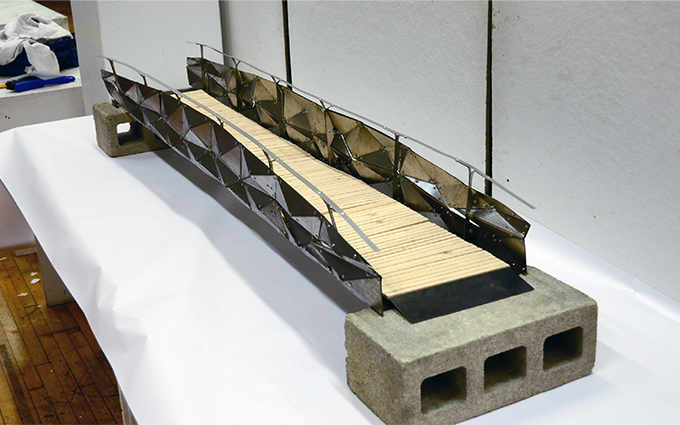
The system was broken into discrete parts, so that each pair could take charge of shop drawings and coordination with fabricators:
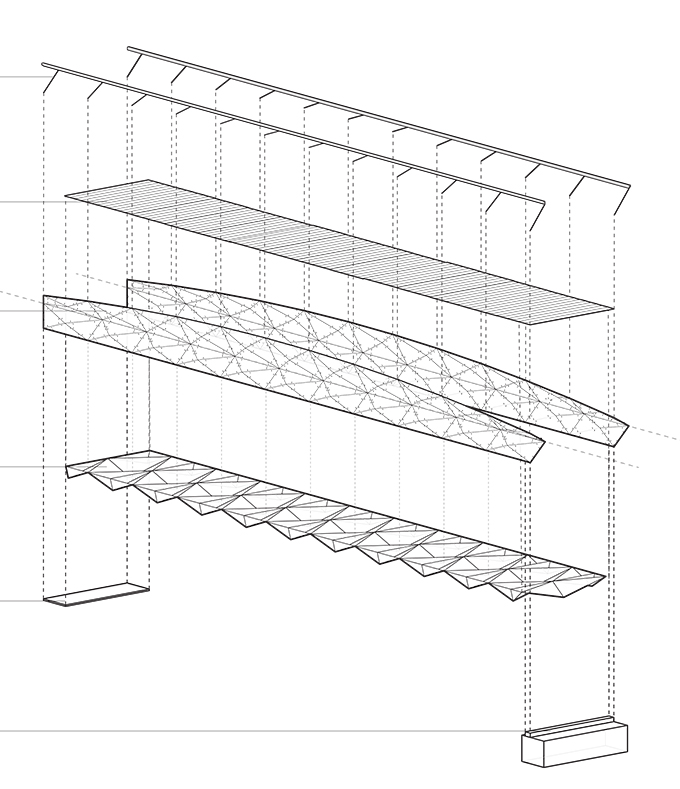
Various strategies involving a folded plate structure and a complex truss network were evaluated for constructability and cost; eventually a monocoque, hybrid system was developed where folded edges of the panels formed a truss sandwiched between an interior and exterior network of folded plates, stiffening the system against shear forces:
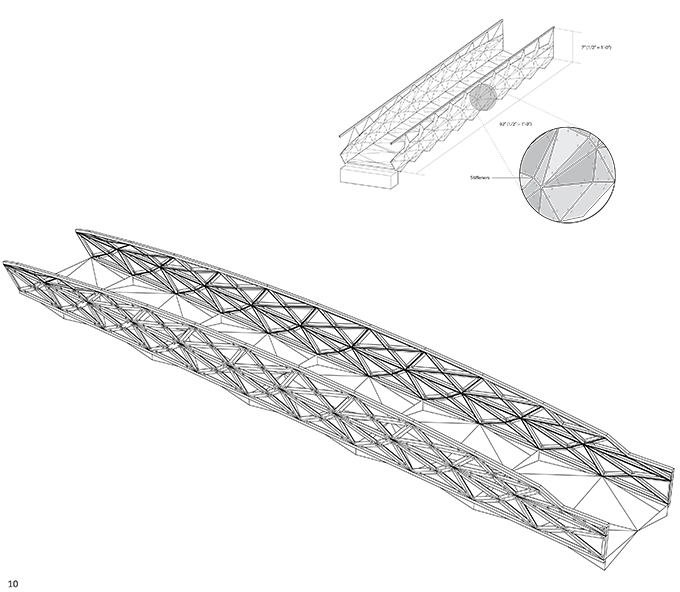
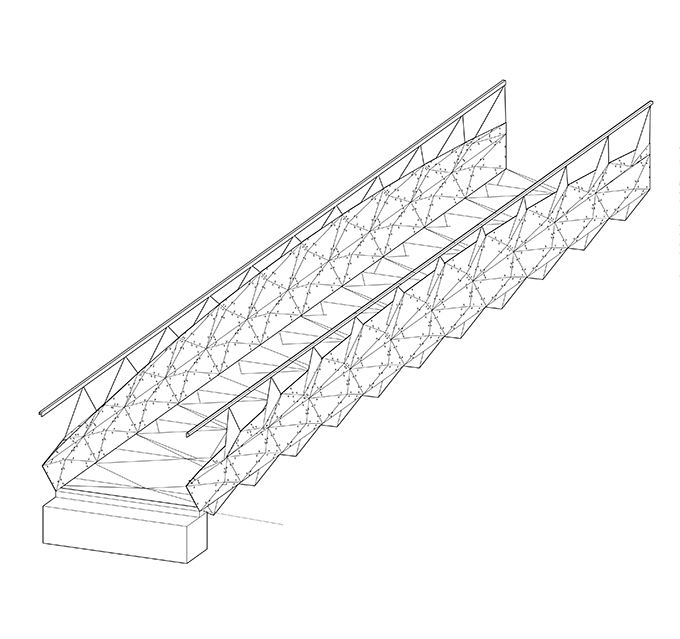
The overall geometry model was built parametricly in rhino to reflect inputs from structural analysis:
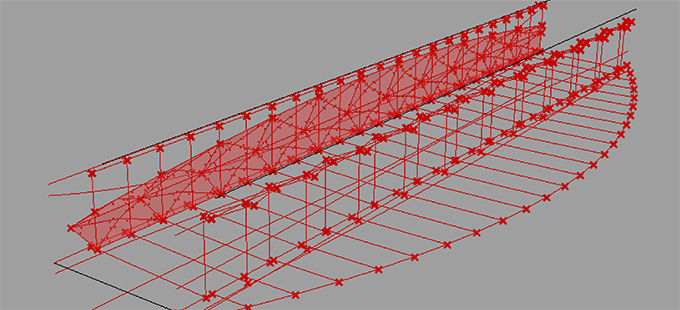
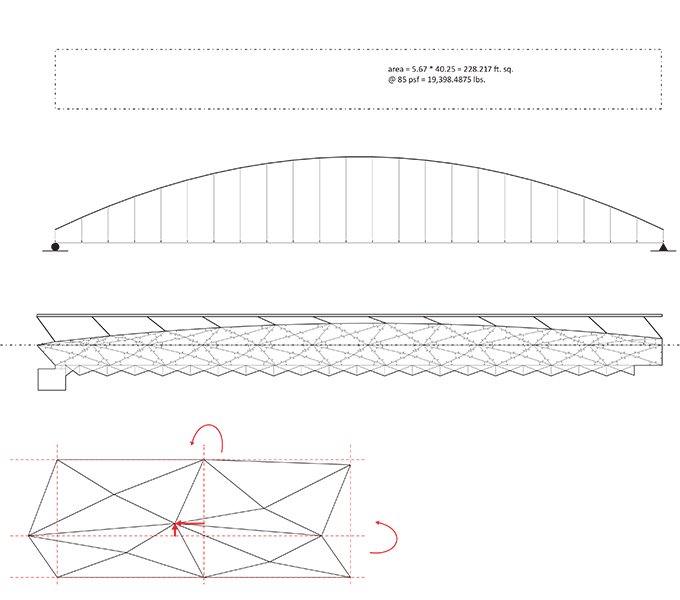
An example of folded plate shop drawings:
